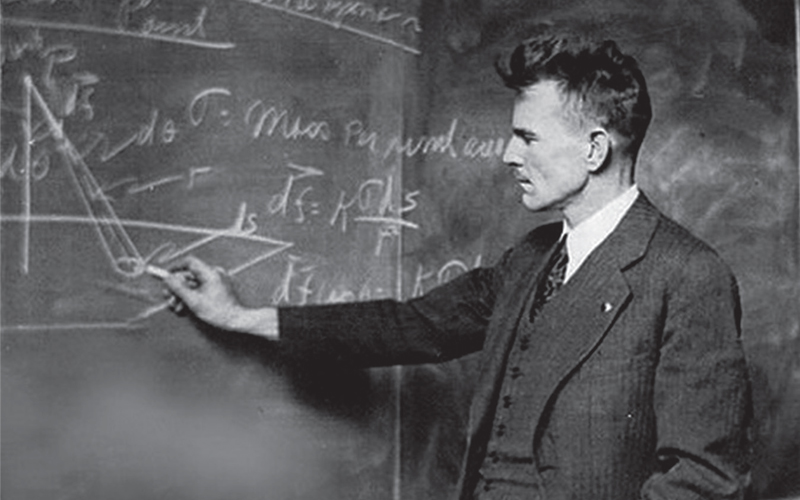A recent vacation afforded me the opportunity to read The Oracle of Oil, Mason Inman’s excellent new biography of Marion King Hubbert. I strongly recommend it. But, rather than writing a standard book review (which might cover much of the same ground as this one by Frank Kaminski), I’m inspired instead simply to offer a few words in appreciation of Hubbert himself.
Born in Texas in 1903, Hubbert earned his Ph.D. in geology at University of Chicago, then taught at Columbia University. He later worked at Shell’s research laboratory and for the U.S. Geological Survey, and occasionally lectured at Stanford and UC Berkeley. His contributions to geophysics included a mathematical demonstration that rock in the Earth’s crust, because it is under great pressure over large areas, behaves in some ways more like a liquid than a solid. He earned every relevant scientific award short of a Nobel prize, and won lasting fame as the father of “peak oil”—the theory (by now more of an observation) that oil production in any large area will inevitably start from zero, reach one or more high points, and decline back toward zero. (Here is a brief video clipof Hubbert in 1976 explaining the very basics of peak oil).
For years I’ve had a photographic portrait of Hubbert, given to me by his nephew, hanging just above my computer in my home office. I described Hubbert’s best-known accomplishments—his mathematical modeling of oil depletion and his successful forecast of a decline in U.S. petroleum production beginning around 1970—in my 2003 book The Party’s Over, and I have spent most of the last couple of decades reading, writing, and speaking publicly about oil depletion and its consequences, so I could fairly be described as a longstanding Hubbert devotee. After devouring Inman’s meticulously researched and entertainingly written biography, I feel even more indebted to the great man than before.
…click on the above link to read the rest of the article…
